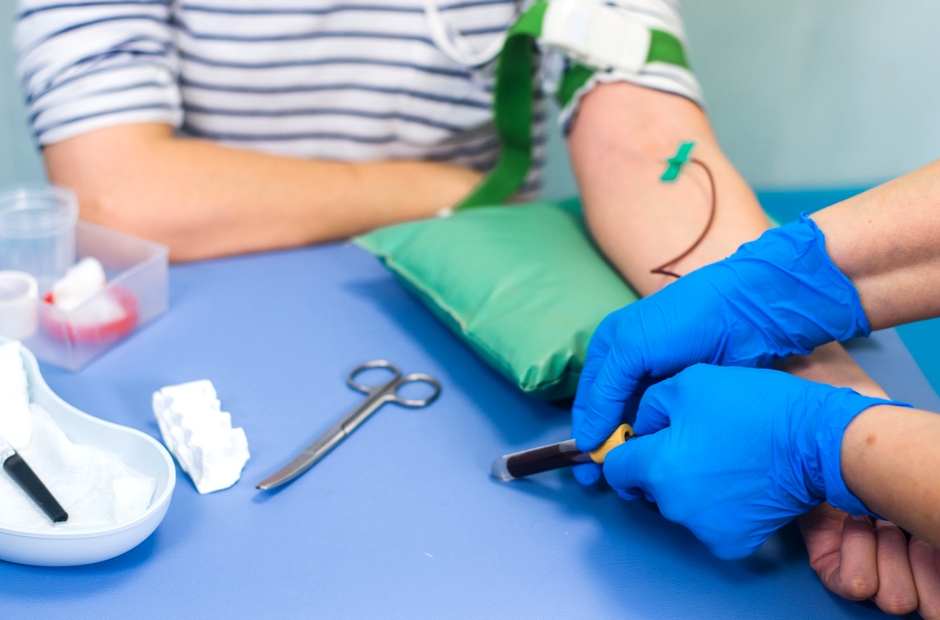Master the Certified Phlebotomy Technician Exam: Essential Tips and Best Preparation Strategies
Becoming a Certified Phlebotomy Technician (CPT) is a significant step toward a rewarding career in the healthcare industry. passing the CPT exam not only validates your skills but also opens doors to a variety of job opportunities in hospitals, clinics, laboratories, and blood donation centers. But preparing effectively for this exam can be challenging without the right strategies and knowledge. In this comprehensive guide, we will explore essential tips, proven study strategies, and practical advice to help you master the Certified Phlebotomy Technician exam with confidence.
Understanding the Certified Phlebotomy Technician (CPT) exam
What is the CPT Exam?
The CPT exam is a certification assessment designed to evaluate the knowledge, skills, and competence of aspiring phlebotomy technicians.Administered by organizations like the National Phlebotomy Association (NPA), american Society for Clinical Pathology (ASCP), or other certifying bodies, the exam typically covers areas such as:
- Basic anatomy and physiology
- Venipuncture procedures
- safety and infection control
- Specimen handling and processing
- Patient interaction and communication
Exam Format & Structure
Usually, the CPT exam includes multiple-choice questions (MCQs), ranging from 50 to 100, depending on the certifying organization. The exam duration varies but generally lasts between 1 to 2 hours.Understanding the format helps plan your prep effectively.
Key Components of Effective Exam Preparation
1. Create a Structured Study Schedule
Consistency is key when preparing for the CPT exam. Break down your study material into manageable sections and set specific weekly goals. A well-structured schedule minimizes last-minute cramming and boosts confidence.
2. Gather Reliable Study Materials
Choose high-quality textbooks, online courses, practice tests, and study guides. Resources such as the NAACLS accredited programs and reputable online platforms can provide comprehensive coverage of exam topics.
3. Focus on Weak areas
Identify your weaker subjects through practice exams and allocate more revision time to those topics. strengthening your knowledge in challenging areas increases your overall exam score.
4. Practice with Mock Exams and Past questions
Simulate the exam habitat by taking timed practice exams regularly. This helps improve your time management skills and familiarizes you with the question style.
5. Engage in Hands-On experience
If possible, gain practical experience through internships or clinical rotations. Real-world practice enhances your technical skills and boosts your confidence during the exam.
Essential Tips for Success in the CPT Exam
Tip 1: Understand the Exam Content Area by Area
Map out the exam content based on the official test blueprint. Such as, allocate time proportionally for topics like venipuncture techniques versus safety protocols.
Tip 2: Master Phlebotomy Procedures
- Know proper site selection for venipuncture
- Practice needle insertion techniques
- Learn proper tube handling and order of draw
Tip 3: Emphasize Safety and Infection Control
Understanding worldwide precautions, PPE usage, and waste disposal protocols is vital. These not only help pass the test but also prepare you for real-world practice.
tip 4: Develop Good Patient Communication Skills
- Practice explaining procedures clearly
- Maintain patient comfort and safety
- Handle nervous or challenging patients professionally
Tip 5: Review Legal and Ethical Guidelines
Familiarize yourself with patient confidentiality laws, consent procedures, and scope of practice.
Practical Strategies & Study Hacks
- Create flashcards for quick review of key concepts
- Join study groups to exchange knowledge and stay motivated
- Utilize online practice tests to track your progress
- Attend review courses if available in your area or online
- Stay organized with notes, calendars, and checklists
Benefits of Preparing Effectively for the CPT Exam
- Increased confidence in your skills and knowledge
- Higher chances of passing on the first attempt
- Better job opportunities and career growth
- acceptance into reputed healthcare organizations
- Personal satisfaction and professional credibility
Case Studies: Success Stories of CPT Exam Takers
| Candidate | Preparation Method | Outcome |
|---|---|---|
| Samantha, 24 | Online course + weekly mock exams | Passed on first attempt, secured job at local hospital |
| James, 30 | In-person class + clinical practice | Passed and recommended as top performer in cohort |
| Maria, 27 | Self-study with flashcards and practice quizzes | Passed comfortably due to thorough preparation |
First-Hand Experience and Practical Advice
Many prosperous phlebotomy technicians emphasize the importance of hands-on practice.During clinical rotations, pay close attention to your technique, hygiene standards, and patient interactions. Remember,confidence built through real-world practice is invaluable during the exam. Also, never underestimate the power of positive mindset-you’ve got this!
Conclusion
Mastering the Certified Phlebotomy Technician exam involves strategic planning, diligent study, and practical experience. By following the tips outlined-such as creating a structured study schedule, practicing with mock exams, and honing your hands-on skills-you can significantly increase your chances of passing the exam on your first attempt. Remember, preparation is not just about studying; it’s about developing the competence and confidence needed to excel in your new career as a certified phlebotomy technician. Start early, stay consistent, and believe in your abilities. your healthcare career awaits!
